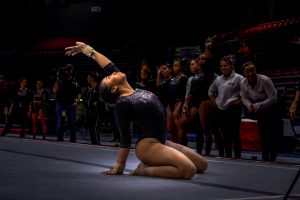Professors tell of work with Nobel Prize winners
November 4, 1988
Two NIU physics professors, Dan Kaplan and David Hedin, share the distinction of having worked with Nobel Prize winners on projects during their graduate studies.
Leon Lederman, Melvin Schwartz and Jack Steinberger won a Nobel Prize for an experiment in 1962 that discovered the existence of two different kinds of neutrinos.
Neutrinos are subatomic particles that have very little mass and are lighter than electrons, Kaplan said.
Kaplan said all of his graduate work was in collaboration with Lederman. “I got interested in subatomic particles in high school. When I got to grad school, I decided that’s the kind of research I wanted to do,” Kaplan said.
During his work with Lederman at Fermilab in Batavia, Kaplan said their most important accomplishment involved the discovery of the fifth quark. Kaplan defined a quark as the smallest known constituent of matter that makes protons and neutrons.
Kaplan said he now is working on another experiment at Fermilab. “We want to study, in more detail, particles made of the fifth quark,” he said.
During his graduate studies, Hedin performed his thesis experiment with Schwartz. He said he met Schwartz through his adviser when he was a graduate student at the University of Wisconsin in Madison.
The experiment Hedin performed with Schwartz involved measuring the rate of formation of certain atoms in special circumstances of decay.
Hedin said the whole idea of generations of particles came from the experiment for which Lederman, Schwartz and Steinberger won the Nobel Prize.
Hedin is working on an experiment to measure and study proton and anti-proton collisions at the highest possible energy.
Kaplan and Hedin came to NIU in January 1987 and are working on experiments at Fermilab in addition to their teaching responsibilities at NIU.






